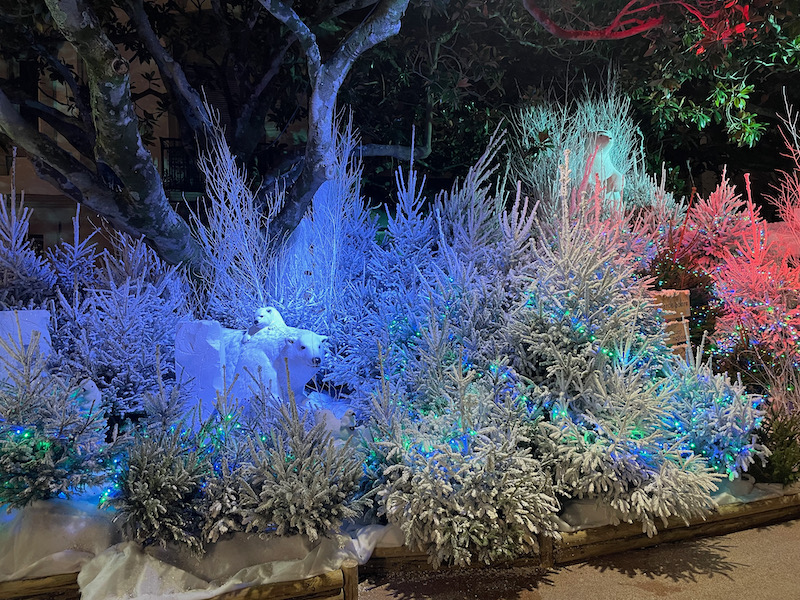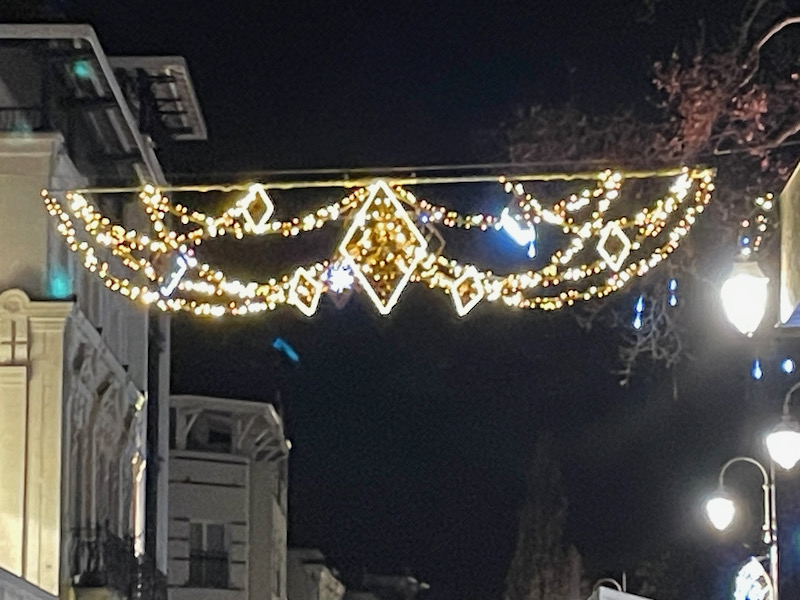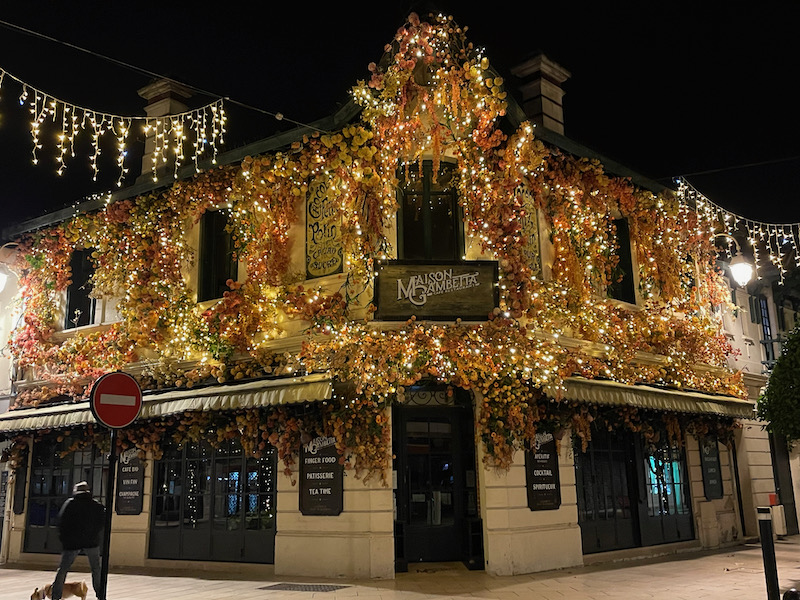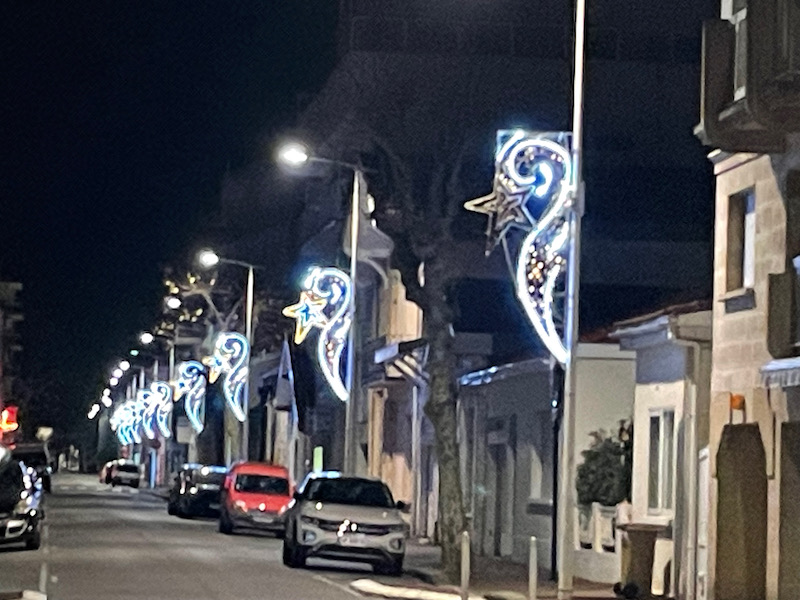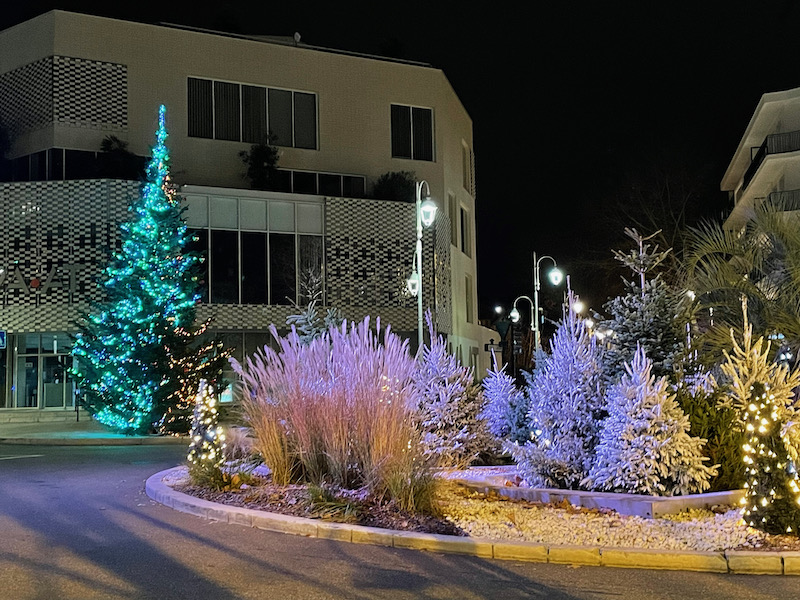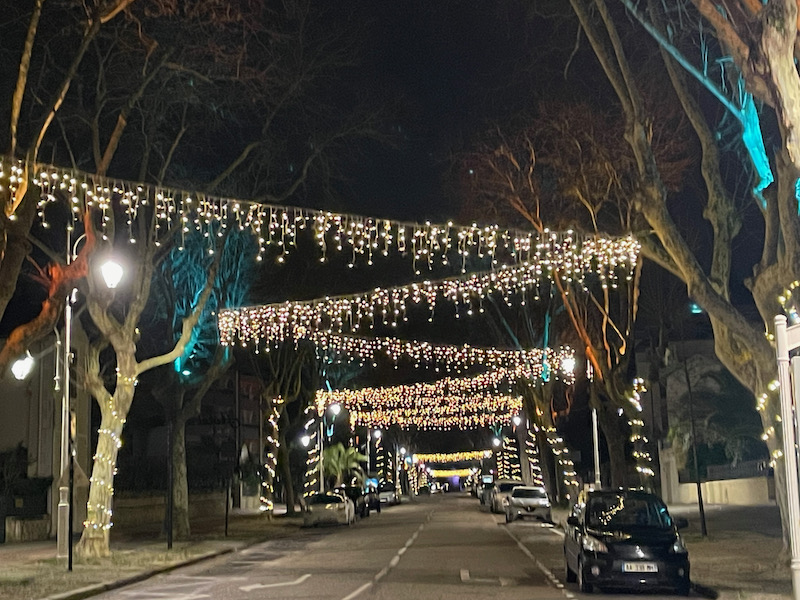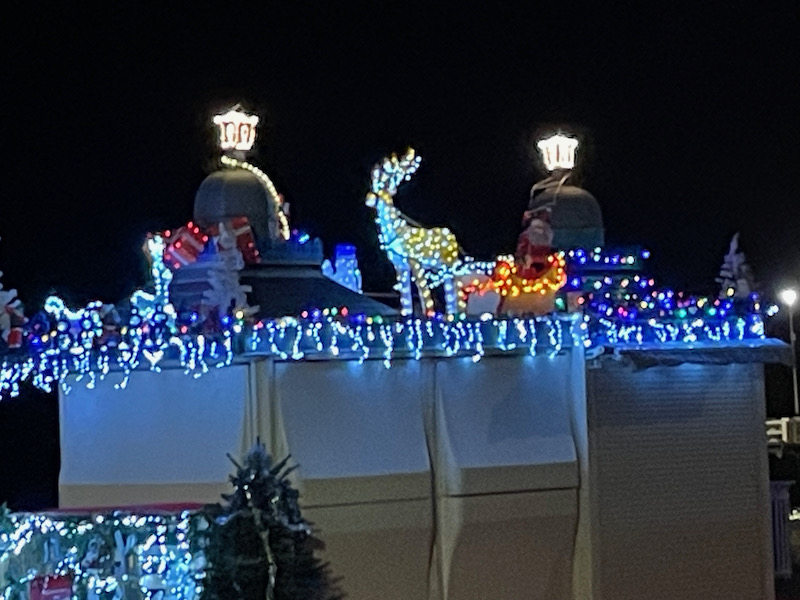Our Blog - Birthday trip to Arcachon, France
We try to do something special for our birthdays, although we tend to do one special thing for the two birthdays combined, since they are so close together. This year, we decided on a quick trip to the Atlantic-side of France to the beach town of Arcachon. It isn't technically on the ocean, but rather, on a Bay called the Bassin d'Arcachon.
It was pretty foggy on the drive, but the fog lifted for about an hour when we checked into the hotel so that we could get a nice view from our window. The hotel was literally just steps from the beach, which was great for taking Lucy to the beach a couple times a day. By the time we took her out for the afternoon, the fog had rolled back in.
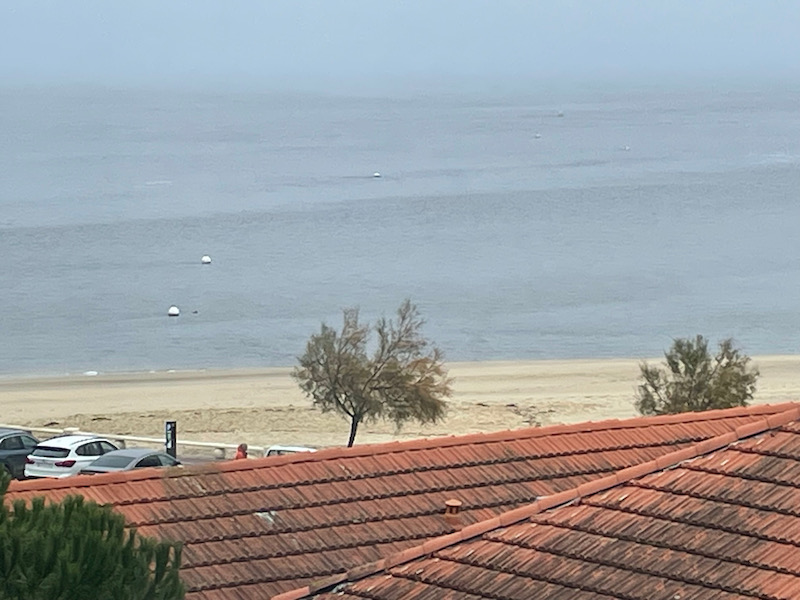
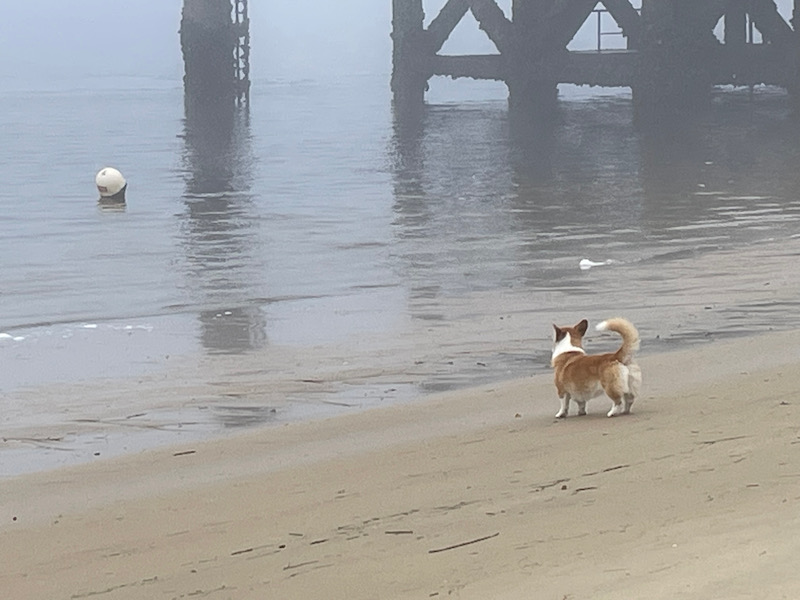
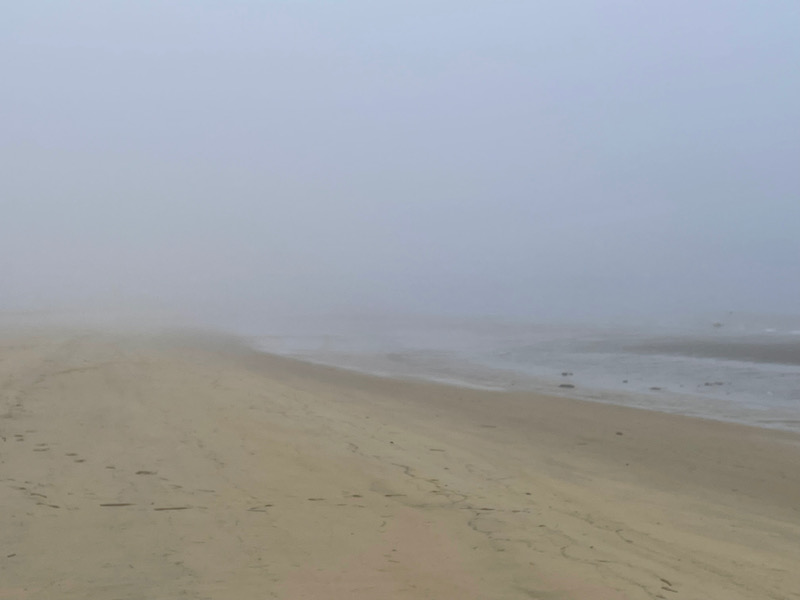
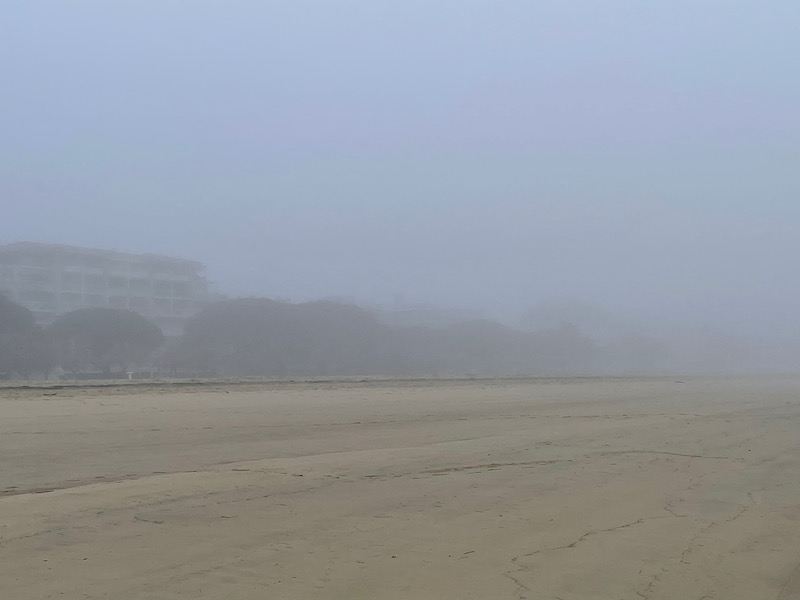
We had originally booked a hotel a little further out but then changed a few weeks ago to this hotel. And I am so glad we did! Not only was it right on the beach and near cafes and restaurants, but the room was really big and had plenty of room to even play ball with Lucy in the room itself! The breakfast was included in the rate, so we ate in the hotel instead of just heading to a boulangerie or cafe nearby. This was the first included-breakfast that we have had where they had a fresh-squeezed-orange-juice machine for the diners. We have seen these at various cafes and boulangeries but never in a place where we could work it ourselves.
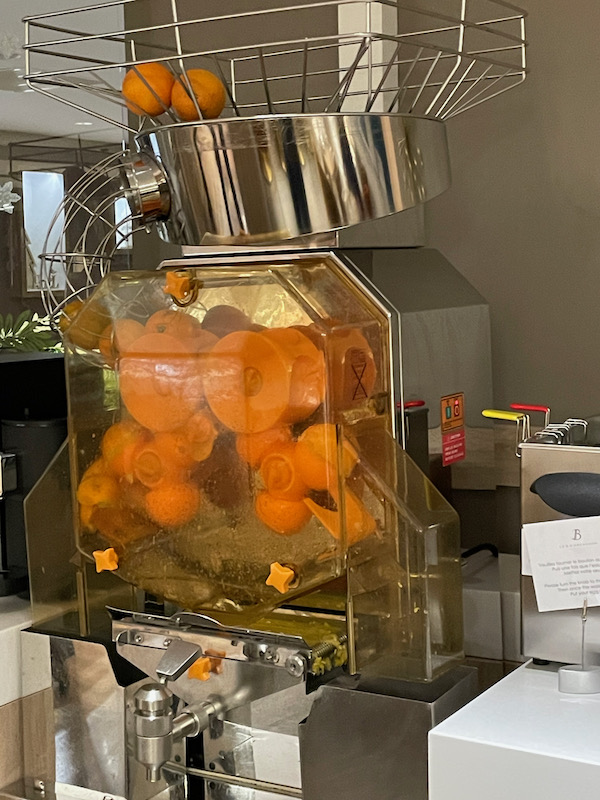
One thing that was on our to-do list was to climb the highest sand dune in Europe, the Dune du Pilat. It was a short drive away and so, of course, we headed over there the next morning. A few numbers ... 190 meters/623 feet high, 2700 meters/8850 feet long, 500 meters/1640 feet wide. If you want to get a nice overview look at the whole thing, surrounded on 3 sides by forest and the 4th side by the ocean, try this picture from Wikipedia. We parked and then tried not to die walking up the dune. During high-season, there is a wooden pathway/stairs that go up the slope to help tourists but they remove it during low-season and so we had to just try to make it up ourselves! I attempted to get pictures to show how big and tall it is but not sure how well this 3-dimensional masterpiece comes out in 2 dimensions.
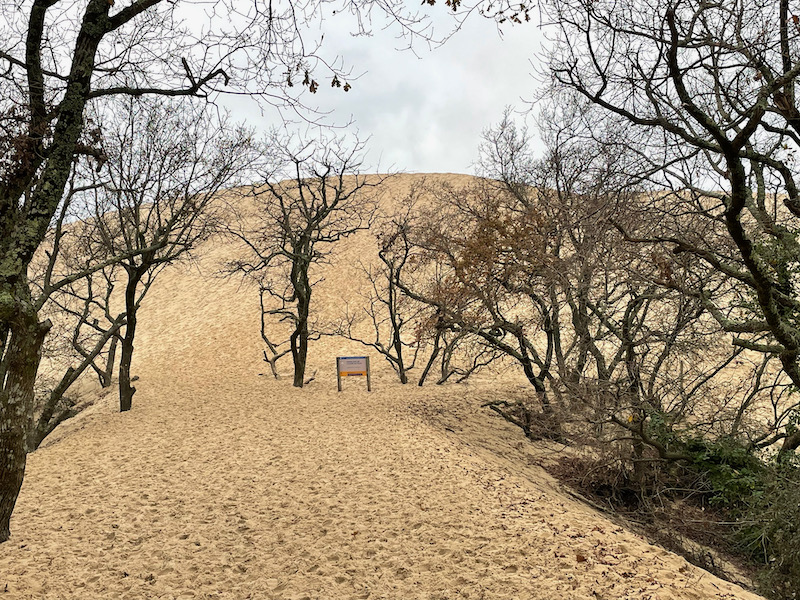
Lucy always has a fun time in the sand, and today was no different. She started a bit slow ....
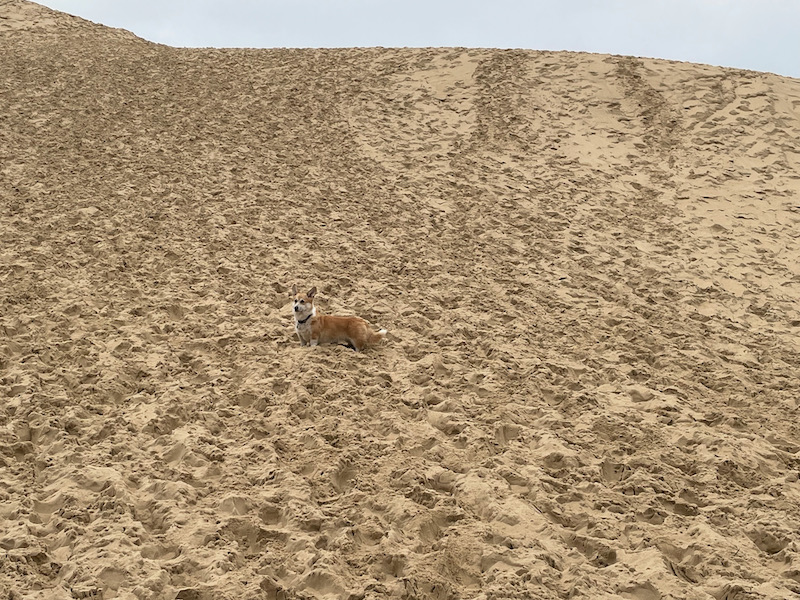
And then she really got the hang of it!
I tried to get at least a couple pictures to show what was around, and how high up we were!
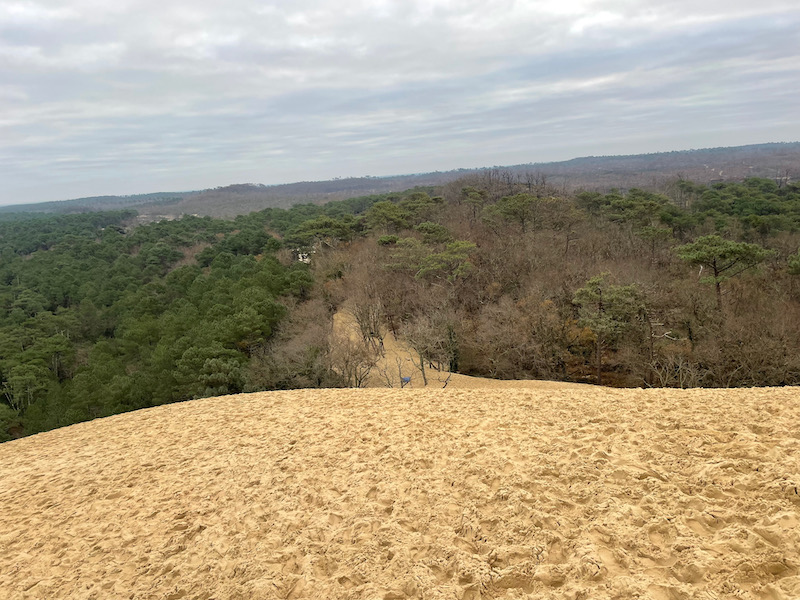
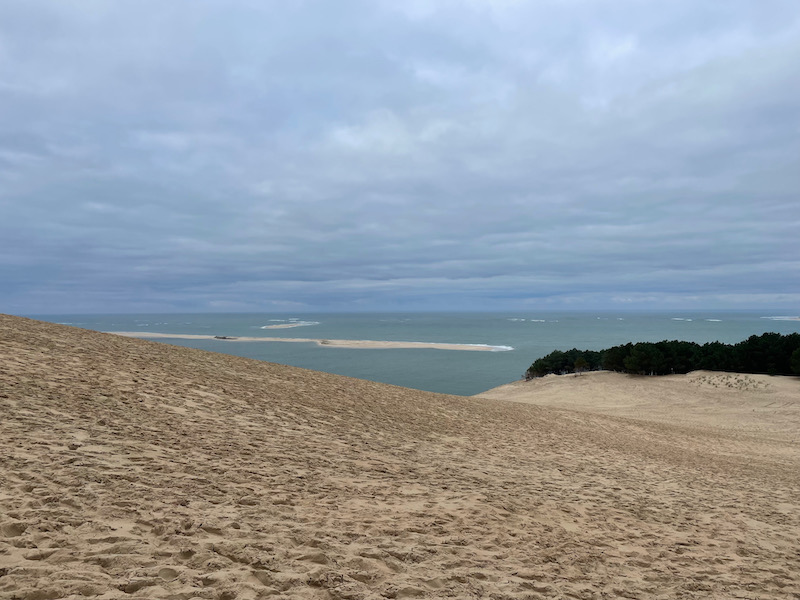
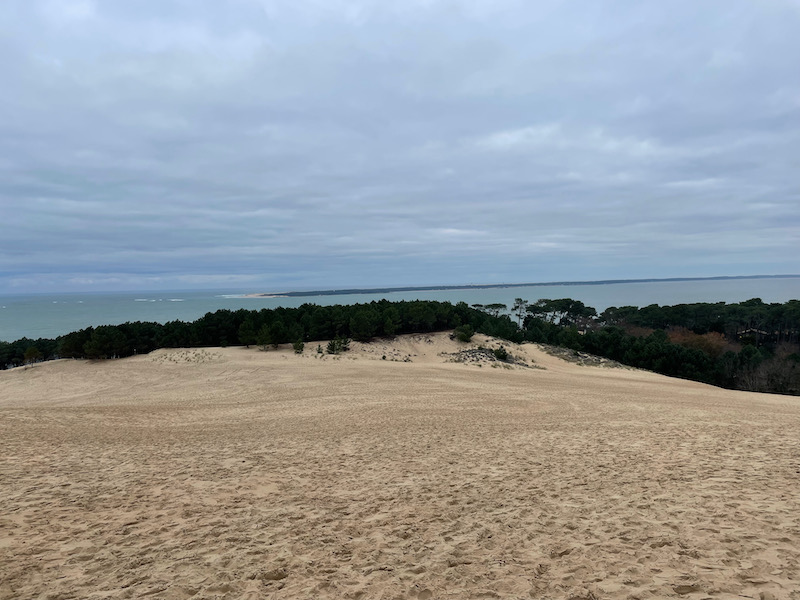
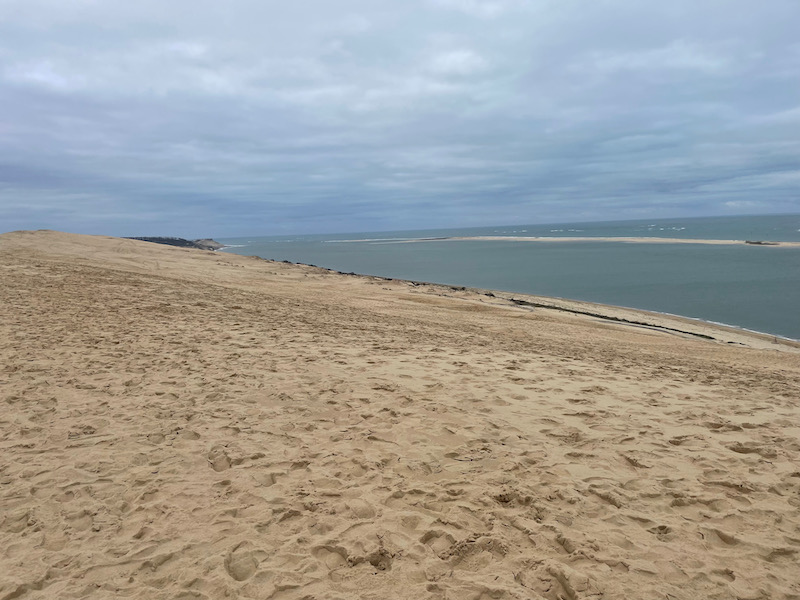
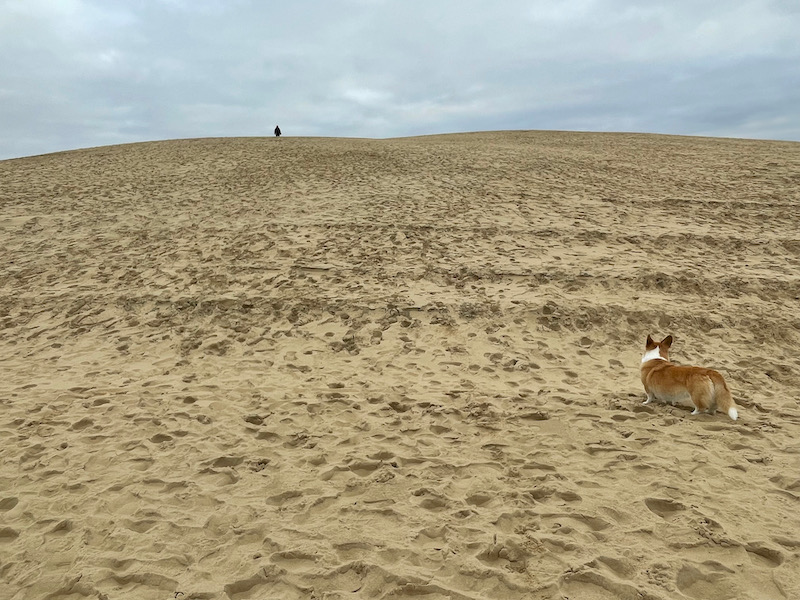
Lucy got to the top and was worried because mom was lagging behind.
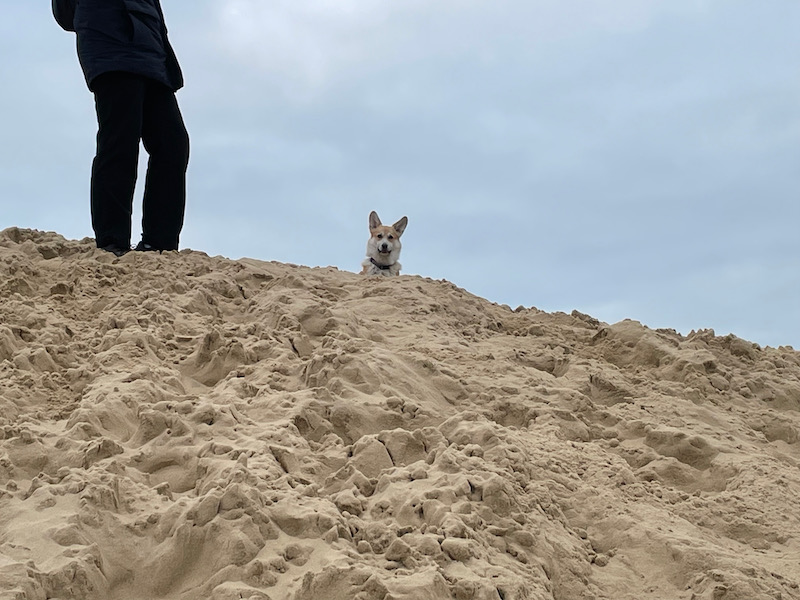
A view around the dune from one side to the other ... you can see at the very end of the video, there is an old German blockhouse on the beach.
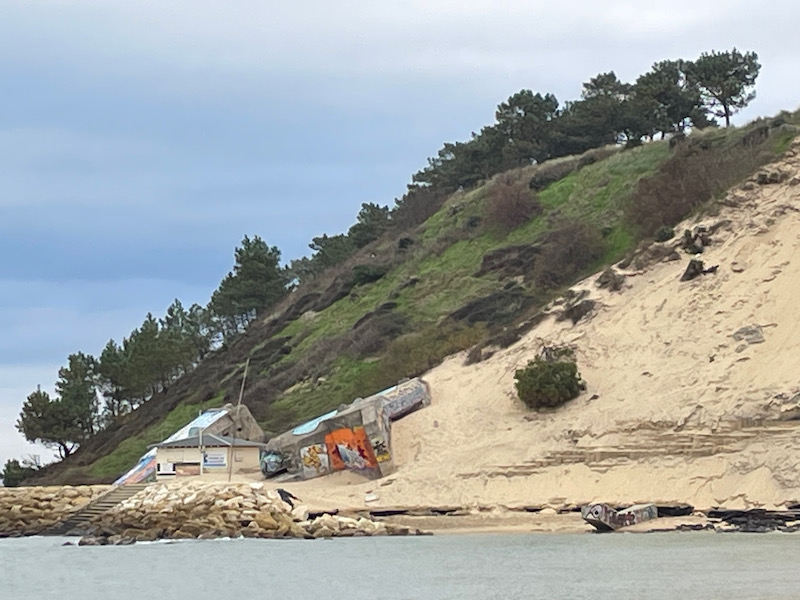
We saw lots of these on the beach during low tide ... jelly fish of some sort ... not really sure if they were alive and would go back into the water at high tide, or if they were (or would be later on) dead.
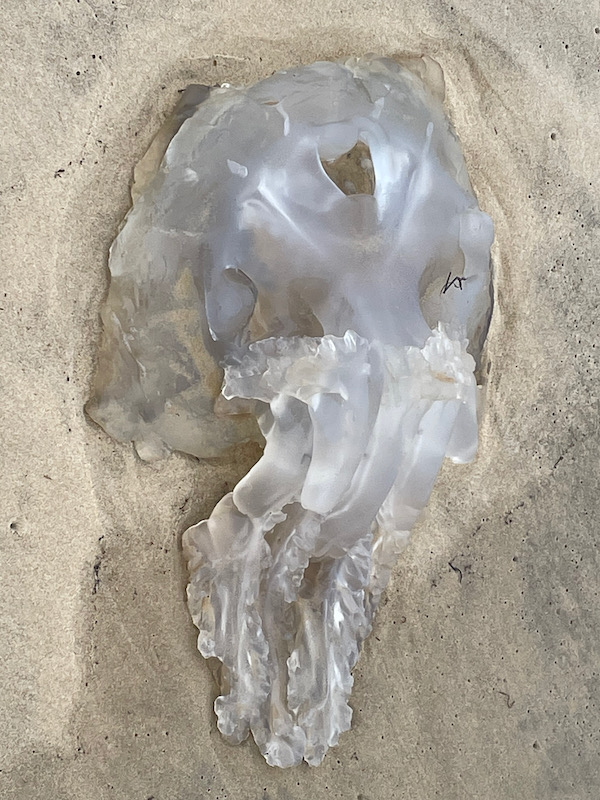
Now back to the actual town of Archachon. In the beginning of the 19th century, there was almost nothing there other than a few fishermen's huts. In 1841, a railway line linked Bordeaux to La Teste-de-Buch (just south of Arcachon). In 1845, a deep-water landing area was built in the bay, Villas were built, and voila ... the town of Arcachon was born. As sea bathing became popular, towns like Arcachon started to boom. Between 1862 and 1865, the so-called "Winter City" was built, where wealthy families would create elaborate villas where they would spend the winters away from the cold weather in most of the rest of Europe. We picked a small subset of the villas and headed out to find them.
The first villa that we saw was the Villa Regina. It was built in 1881 as a hotel and then expanded a few more times. During these expansions, two symmetrical wings were added to the original central section. No expense was spared ... it included a hydraulic elevator. The hotel was closed in 1943 when it was transformed into a luxury residence for the elderly. Then in 1990, it was again converted, this time into a middle-of-the-road hotel.
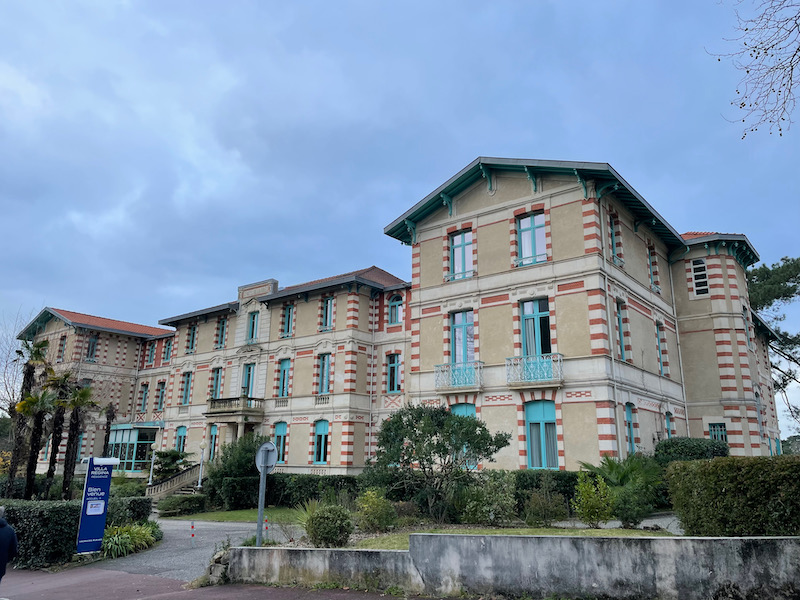
Dating back to 1880, Villa Carmen originally belonged to a municipal councilor who welcomed the Queen Mother of Spain, Isabella II. While staying in Arcachon, the Queen Mother wanted to see the places where the previous year, her son Alphonse XII met Archduchess Marie-Christine and had became engaged. Her entourage was made up of around 30 people and to accommodate all these people, the neighboring villa was also loaned to the sovereign. The villa is an interpretation of the Swiss chalet, a style that was fashionable when the first villas were built.
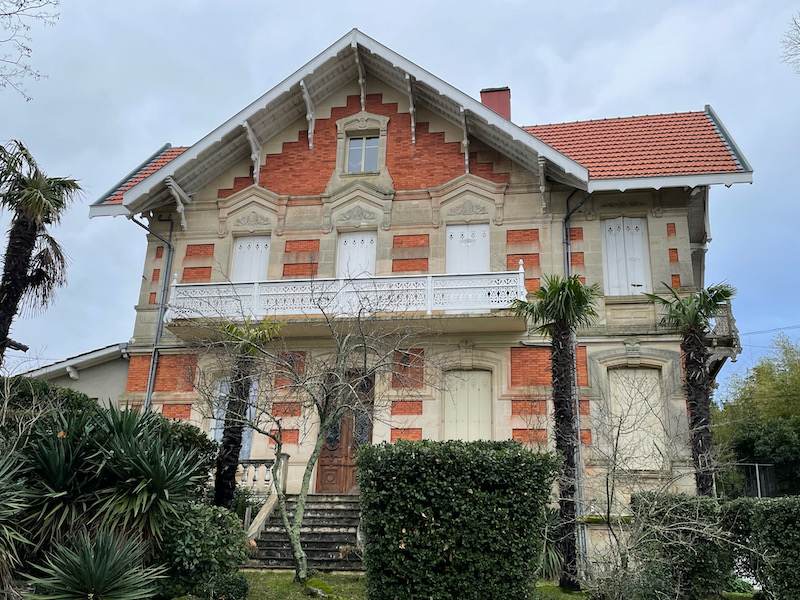
It was closed when we went by, so we only saw the Anglican Church from the outside. Inaugurated in 1878 and dedicated to Saint Thomas, the building has a large, steeply sloping roof. The first chaplain had contracted pneumonia in England and he decided to leave his native country in search of the pure air of Arcachon, where he settled in 1866. In 1895, he was one of the founders of the private Arcachon golf course.
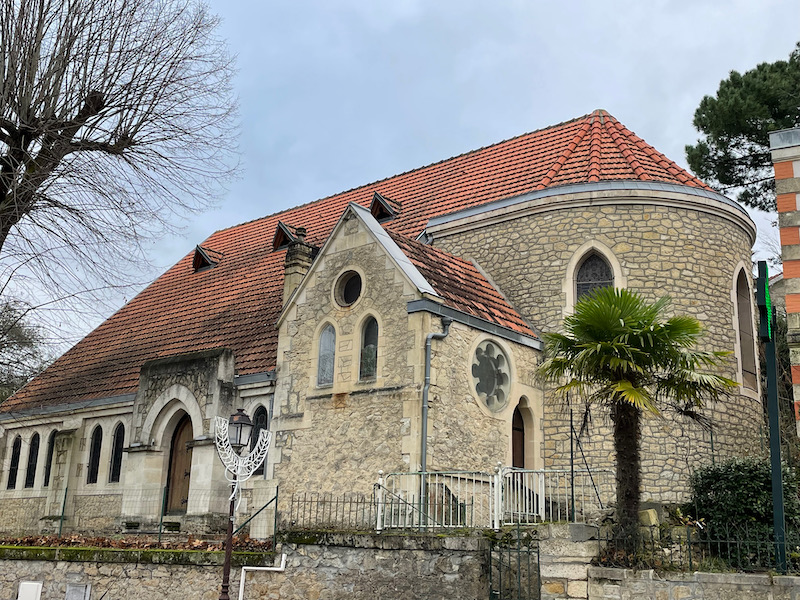
Villa Trocadéro was built in 1863-1864 on the model of the Swiss chalet. It was remodeled around 1900, with the addition of a balcony with an ornate balustrade, a veranda, and other architectural elements which evoke the idea of colonial houses of the Indies. You'll see another house later with this as well, but this one one of the first villas to showcase the craze for cut-wood decor in the 19th century. It was SUCH a big craze, that there were 8 factories in this area alone that produced these decorative elements.
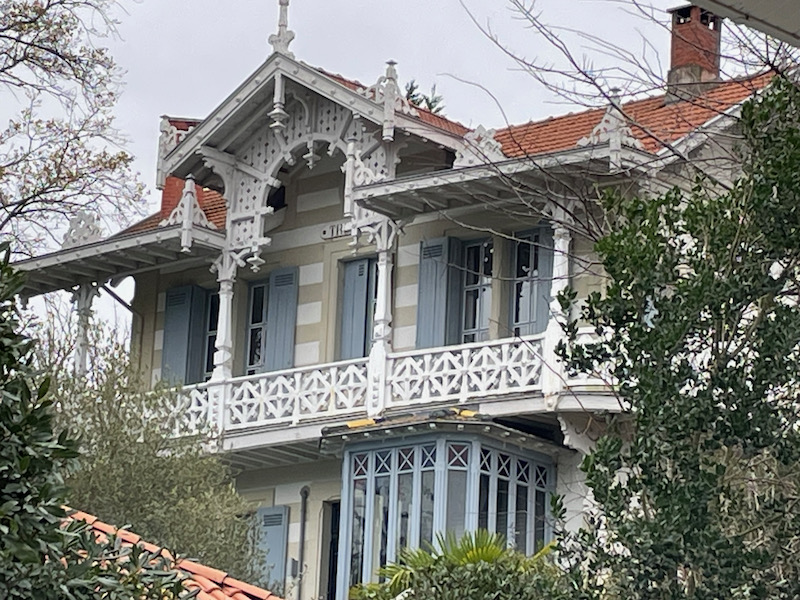
The Villa Brémontier is one of the first villas built here, dating back to 1863. While some villas were for the owners family, a set of them, like this one, were "rental chalets". This was the most prestigious and expensive of these "rental chalets", which I can understand with the general size of the building.
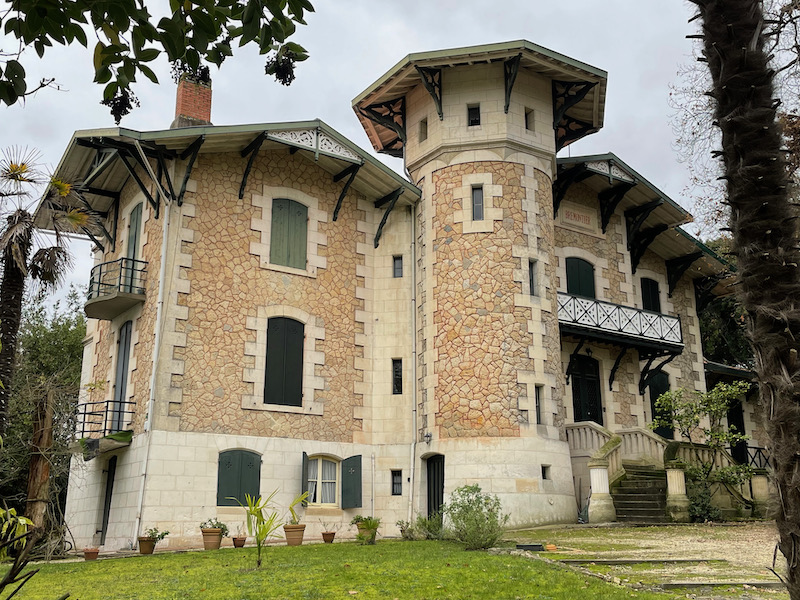
La villa "Faust" was built in 1862 and takes its name from the opera (written by Charles Gounod), which was wildly successful at the end of the 19th century. On the front is a porch that has 3 arches supported by columns. It was modified in 1879 to have more of a "castle" look, with an octagonal "prison" tower.
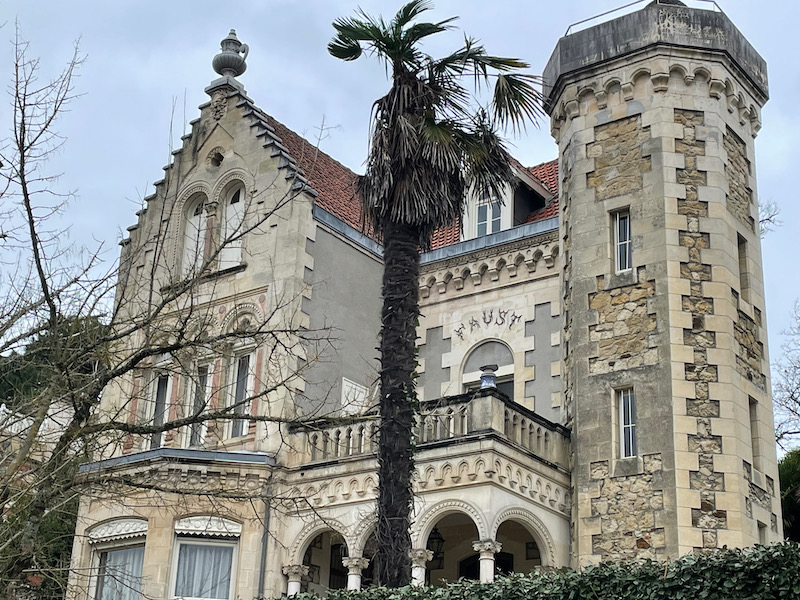
Here is the other villa I mentioned earlier that has the cut wood decorations. Originally built as a gymnasium (go figure), this was converted into a villa and all of the cut wood decorations were added.
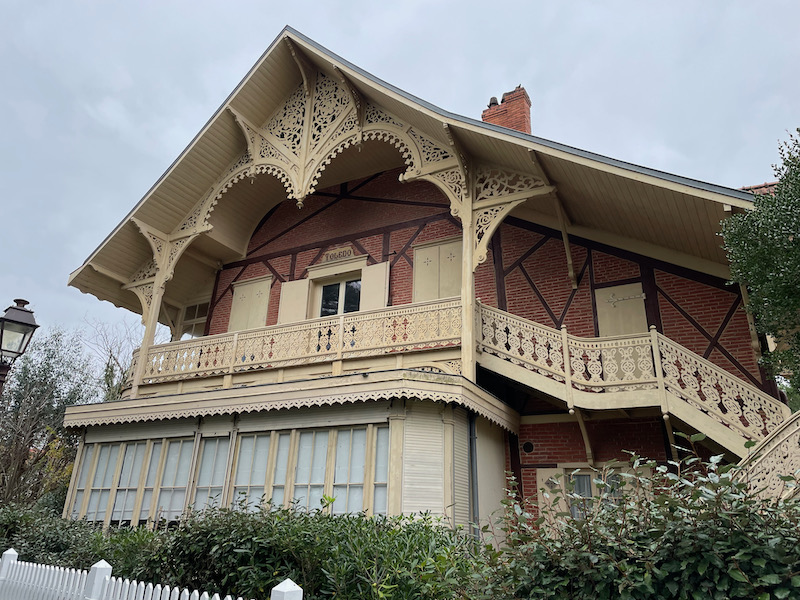
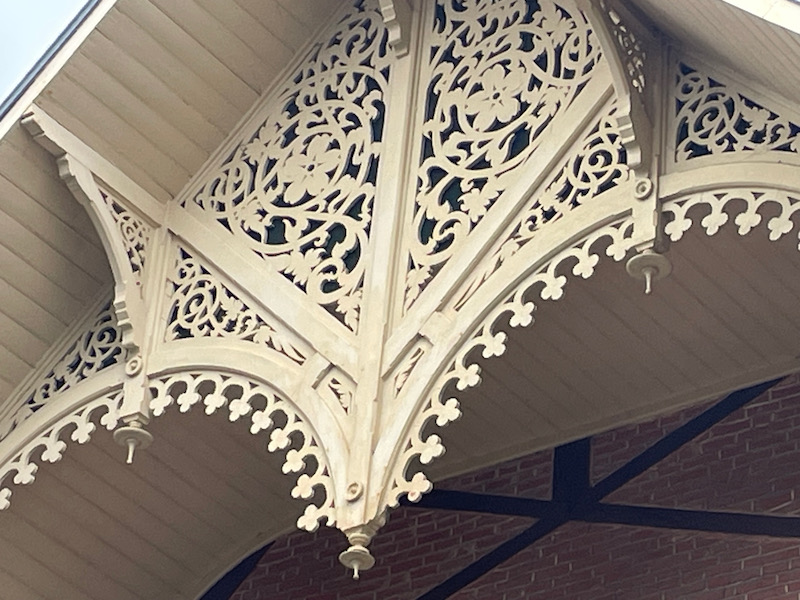
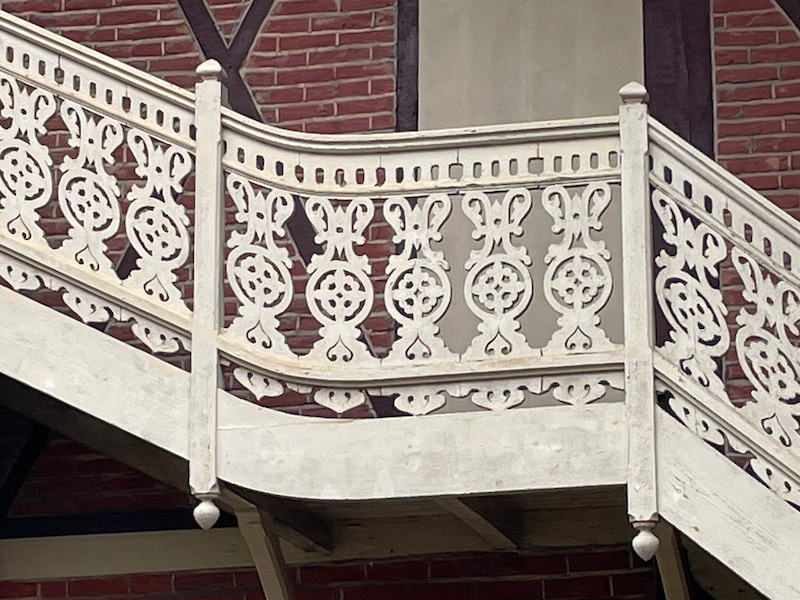
We then headed up to an observatory, but in 1862, with an 80-foot-tall belvedere. From there, we got some great views of the town.
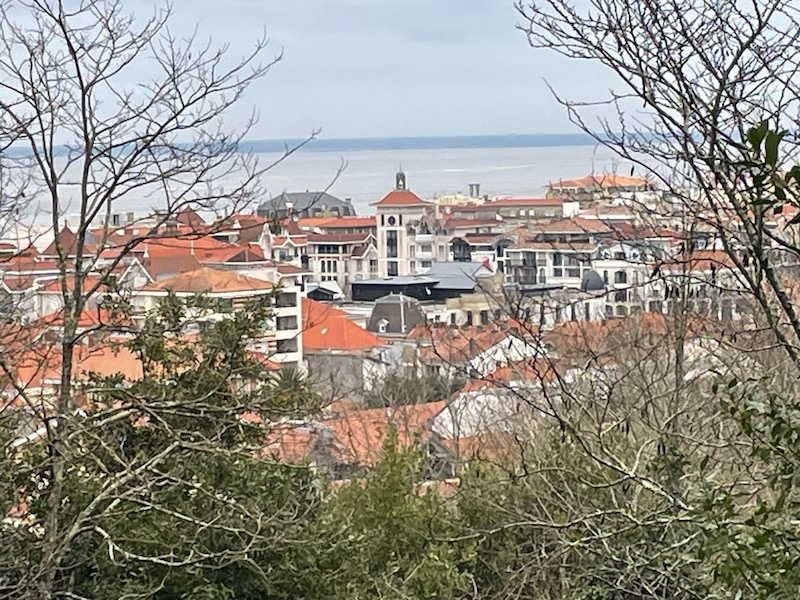

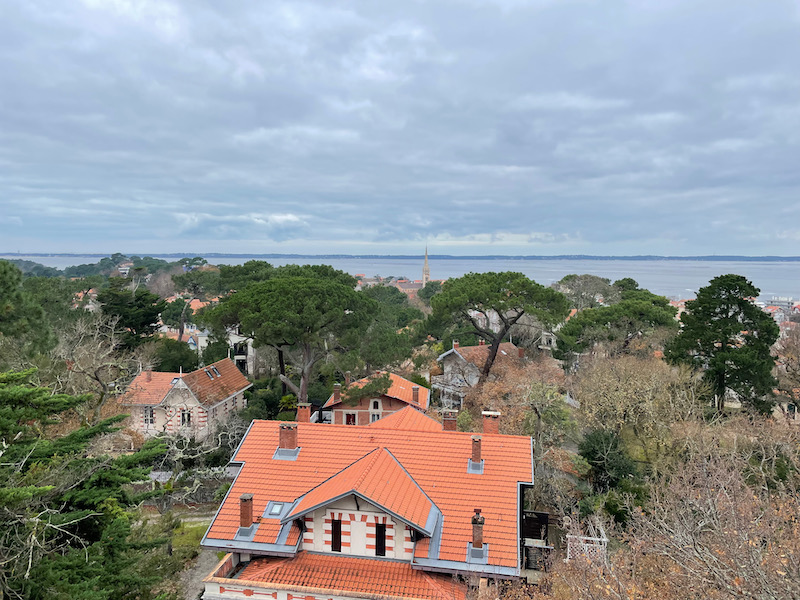
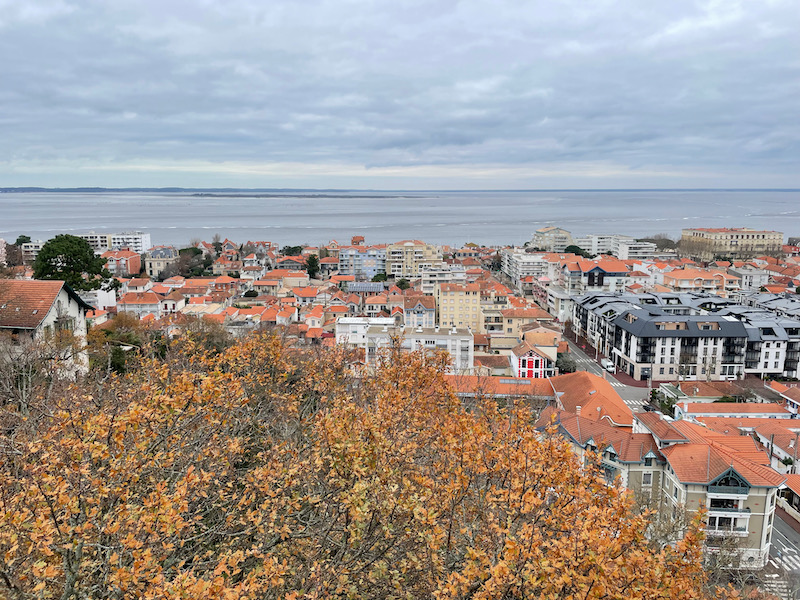
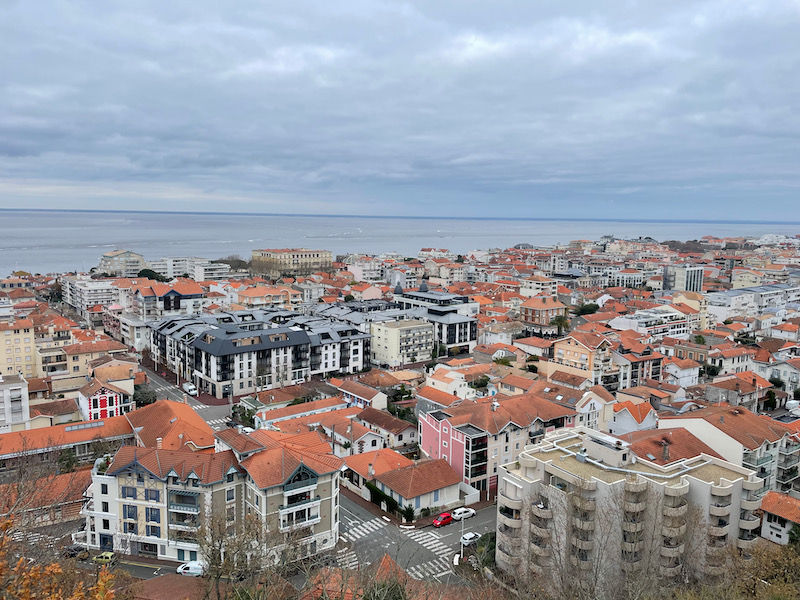
This was probably my favorite, and according to the Tourist Office information, it is "undoubtedly one of the most beautiful and largest in the Winter Town". It was built in 1895 and named for the French novelist and playwright. Alexandre Dumas (The Count of Monte Cristo and The Three Musketeers are probably his most famous). The villa brings together composite elements of Hispanic style and a belvedere like what you would find on a rustic Italian villas. Polychrome plays an important role in this building, both in the masonry and in the cut wood ornaments.
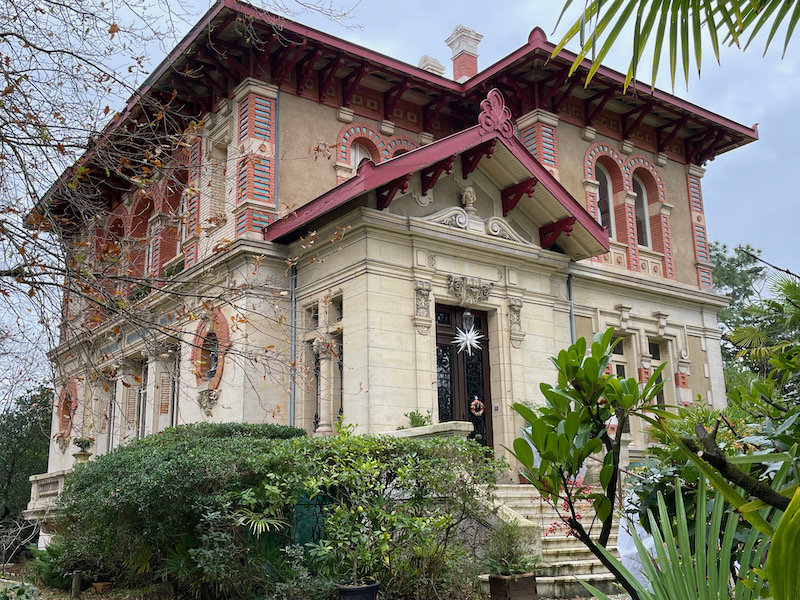
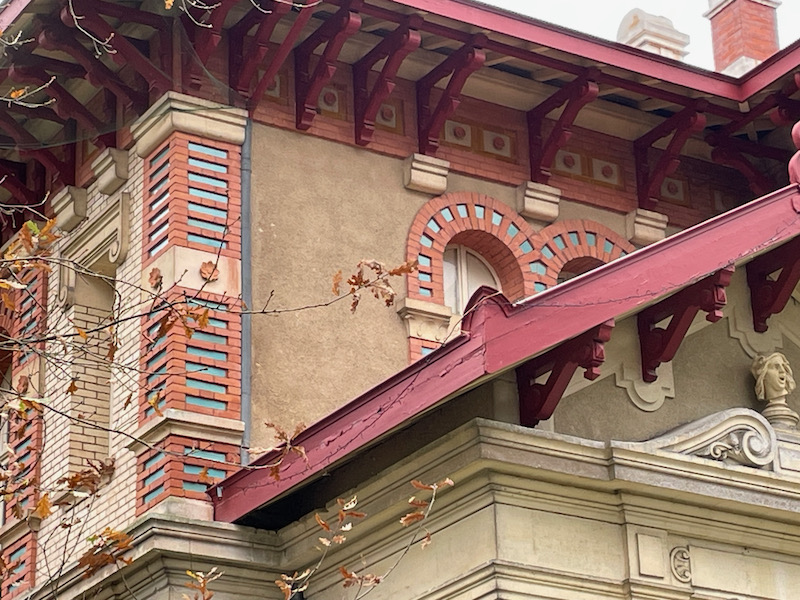
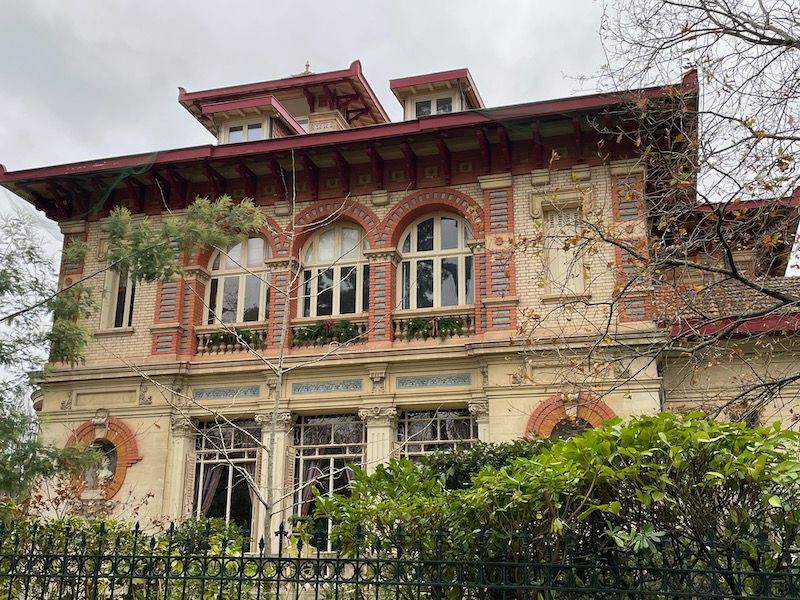
In the middle of town is a park, named Parc Mauresque, that was built on a hill (the "upper town") with a large Moorish-designed casino. To get to the park and casino from the lower town, a funicular was built in 1912, which was replaced by an elevator in 1949. In 1952, the entrance was decorated by a ceramic bas-relief entitled "Fauna pursuing nymphs", showing an ancient theme of fauna and nymphs, very fashionable during the Art Deco era.
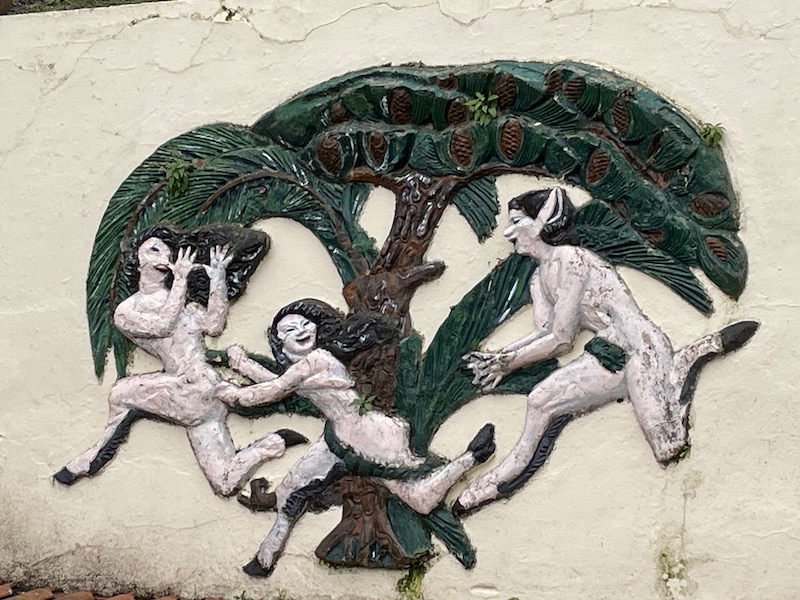
While we weren't there for the Christmas Market, there was a small one with several chalets next to the market, where we had a little lunch of fresh oysters. I also took a set of photos our last night in town of some of the lights and decorations. Some are better than others ... I haven't yet mastered taking pictures of lights.

